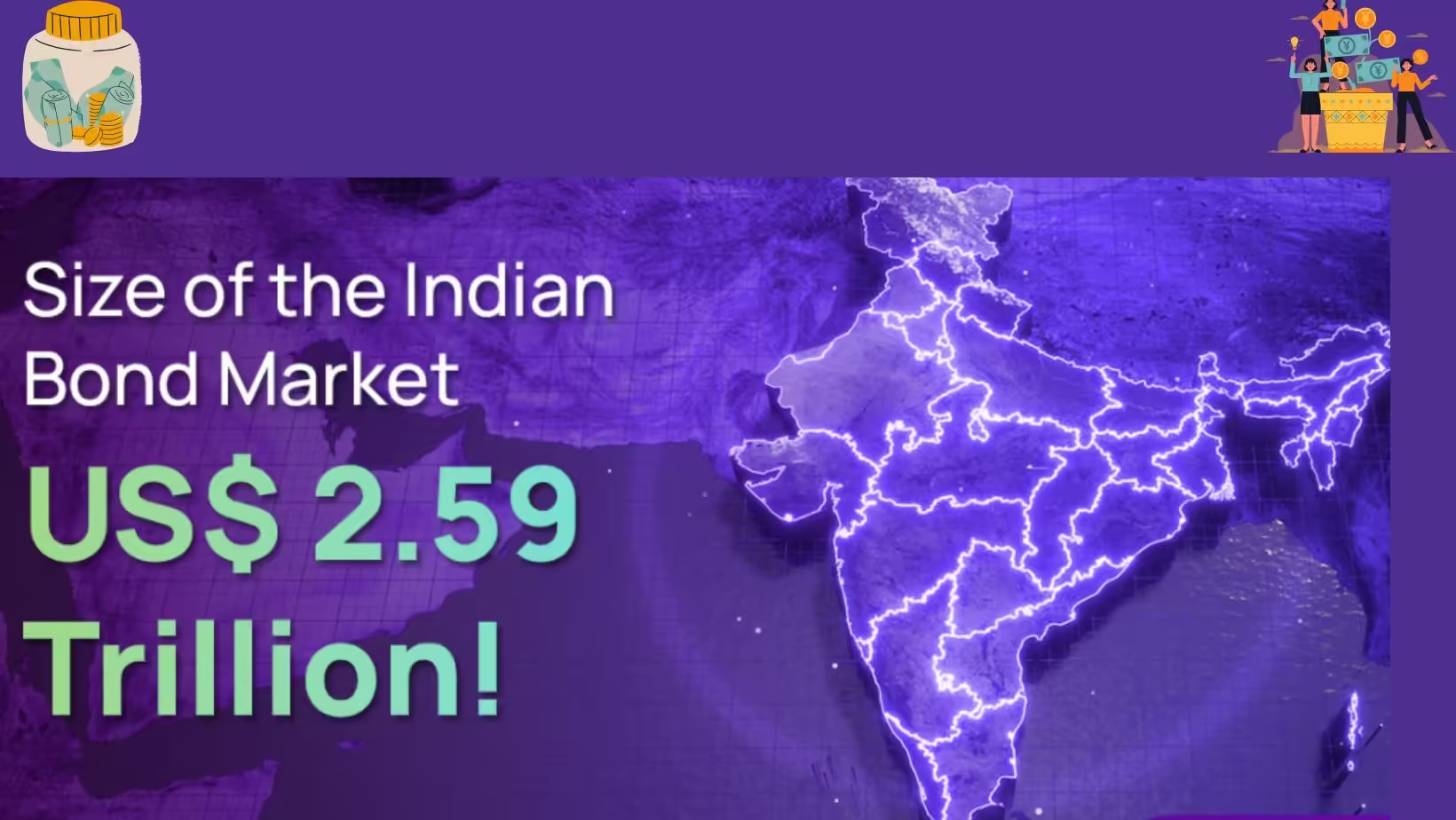Introduction
This Indian markets for bonds are an essential part of India’s financial system. The size of the market does not just highlight the tenacity and the depth of India’s debt instruments, it also highlights the potential for growth in the future. In the global financial landscapes, in which the global bond market is at an astounding $133 trillion in value, India’s market is a major market with huge potential for growth.
This article focuses on the present condition and future outlook for India’s Indian markets for bonds, offering insight into the structure of the market, its growth path and the vital part it plays in financing the nation’s ambitions for economic development.
Global Sizing
By 2023, global GDP was estimated to be at least USD 101 trillion (Source: World Bank) The world equity market was worth US$106 trillion and the world bond market was worth the sum of US$133 trillion (Source: SIFMA). The statistics for the biggest economy on the planet are more intriguing. Its US economy’s GDP for 2023 was predicted by experts to be 26 trillion dollars. The equity market cap of the country was estimated at US$45 trillion however, the bond market accounted for massive at 53 trillion dollars! (Source: SIFMA).
These numbers have experienced significant growth post-2020 because of the huge stimulus and liquidity injections from the US after the outbreak of Covid-19. It is estimated that the All India equity market capitalization was at around US$4.98 trillion (Source: BSE). As you are aware, it is estimated that the Indian bond market has now peaked at around US$2.59 trillion (Source: CCIL and SEBI). It’s fascinating to realize that, even though the market for bonds in India is huge but it also has a substantial potential for explosive growth from here.
Market Structure
The markets for bonds in India have seen significant improvement in the last 10 years, and provide a solid investment opportunity for investors. The main market segments include Central Government Securities (G-Sec), State Development Loans (SDL) and Corporate Bonds. The market depth of these bonds has witnessed constant growth in primary issuance and expanding trading volume within the secondary market.
RBI is the regulator of G-secs SDLs as well as money market and money markets, whereas SEBI supervises the market for corporate bonds. If you weren’t already aware, you’ll be amazed to know that nearly everyone is an investment in bonds markets. The biggest institutional investors in the bond market include all pension funds, insurance companies and mutual fund companies. Other than those institutions in the US, many significant investments are coming from FPIs (Foreign Portfolio Investors). Another factor that is slowly increasing is the individual and retail investments, particularly in the bond market for corporates.
The Indian Context
The market for outstanding bonds in India is estimated by US$2.59 trillion (Source: CCIL and SEBI) The market has seen an annual increase of 12.3 percent in terms of INR over prior year. The market for corporate bonds is valued at $567 billion, grew by 12.6 percent over the previous year. In terms of structure, the market for debt remains heavily influenced by Government securities (G-secs). In order to put this in perspective, the total outstanding stocks of government securities is. 1,68,852,262 millions (US$2.02 trillion) and the outstanding corporate bonds total. 47.28.935 billion (US$567 billion) (Source: CCIL and SEBI).
The the market for bond in India has been growing at an astonishing annually of 12.6 percent in INR dollars over the past decade. This increase is a reflection of the growing importance of the bond market in India’s financial system. Additionally including Indian debt in the global indexes through JP Morgan and Bloomberg has brought Indian Fixed Income on the map.
SEBI Amendments for Corporate Bonds
SEBI has recently introduced significant changes to the market for corporate bonds that significantly cut down the minimum amount of investment of INR one lakh down to INR 10,000. This gradual reduction — from the Rs10 lakh level to Rs1 lakh and later up to Rs10,000 – is designed to encourage more participation while ensuring security. In addition, SEBI has introduced two important changes to improve efficiency in the market: establishing standard dates for bond interest payment and redemptions up to 15 days prior to when due, streamlining the process and making payment processing more clear for investors.
It also improves the communication of financial information via methods like QR codes, which reduce the use of paper and providing quick access to crucial information. The introduction of Online Bond Platform Providers (OBPPs) and stricter regulations for bonds that are not listed further illustrate SEBI’s dedication to expanding the market, while protecting investor interest. We are on the edge of a revolution in bond markets in India and the factors discussed above will only serve to set the stage for an unprecedented expansion and participation.
Outlook for the Future
S&P Global Ratings has revised the outlook of India’s credit rating from stable to positive with a focus on policy consistency major economic reforms, and massive infrastructure investments as the main factors that drive sustained long-term growth. The anticipated growth of India’s GDP up to $5 trillion over the next five years will be financed largely through the credit available to companies through bond markets. This has already been seen in western economies, where the corporate bond market accounts for an important portion in GDP (up up to 50%-65%, in certain instances).

As India is transitioning from a developing into an advanced economy the depth and sophistication of its financial market holds the key to growth. Households who move their enormous savings into investments, and in this instance, to the safer asset class of corporate bonds, are likely to stimulate the exponential growth of corporate bonds as well as help fund India’s credit profile. Our goal at IndiaBonds to serve as an engine to spur this growth and help make bond investing easy for people to invest in bonds. Today, the bond market is huge, however, they’re only going to grow! Don’t get left behind…
Disclaimer Note: Investments in municipal debt securities/securitised debt instruments may be subject to risk which include delay or the inability to pay. Be sure to read all offer documents thoroughly.



















